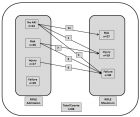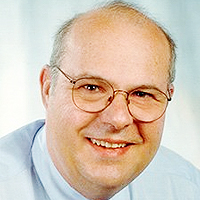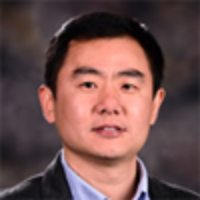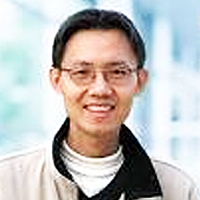Abstract
Review Article
Role of orthodontist in cleft lip and palate
Prashant Sharma*, Amit Kumar Khera and Pradeep Raghav
Published: 11 October, 2021 | Volume 6 - Issue 2 | Pages: 008-015
Cleft lip and palate is one of the most common congenital anomalies occurring round the world varying with the race, ethnicity and geography. Cleft lip and/or palate problems tends to worsen as the individual grows older. Although it occurs as a different entity in itself but its presence can hamper aesthetics as well as functions by effecting growth, dentition, speech, hearing and overall appearance resulting in social and psychological problems for the child as well as the parents. Cleft lip and palate is of a multifactorial origin such as inheritance, teratogenic drugs, and nutritional deficiencies and can also occur as syndromic or non-syndromic cleft. Treatment of Cleft Lip and Palate comprises of different specialists having an individual insight in a particular case ultimately reaching to a consensus for a successful culmination of the treatment. Although appropriate timing and method of each intervention is still arguable. An orthodontist plays a role in pre surgical maxillary orthopaedics, in aligning the maxillary segments and dentition, in preparation for secondary alveolar bone grafting and finally in obtaining ideal dental relation and preparing the dentition for prosthetic rehabilitation or orthognathic surgery if required. Therefore, for efficient treatment outcome and refinement of individual techniques or variations of the treatment protocol a highly able team of specialists from different specialities is a must, preferably on a multicentre basis.
Read Full Article HTML DOI: 10.29328/journal.johcs.1001035 Cite this Article Read Full Article PDF
Keywords:
Cleft; Cleft lip and palate; Orthognatic surgery; Role of orthodontist
References
- Tolarova MM, Cervenka J. Classification and Birth Prevalence of Orofacial Clefts. Am J Med Genet. 1998; 75: 126–137.PubMed: https://pubmed.ncbi.nlm.nih.gov/9450872/
- Samuel S, Prasad BR, Kumari S, Tejaswi SS, Sanal TS. A clinical study of incidence and distribution and co-relating factors of cleft lip and cleft palate among karnataka & kerala population. Nitte Univers J Health Sci. 2014; 4: 66-69.
- Cooper ME, Stone RA, Liu YE, Hu D, Melnick M, et al. Descriptive Epidemiology of Nonsyndromic Cleft Lip with or without Cleft Palate in Shanghai, China, from 1980 to 1989. Cleft Palate Craniofac J. 2000; 37: 274-280.PubMed: https://pubmed.ncbi.nlm.nih.gov/10830807/
- Dixon MJ, Marazita ML, Beaty TH, Murray JC. Cleft lip and palate: understanding genetic and environmental influences. Nat Rev Genet. 2011; 12: 167-178. PubMed: https://pubmed.ncbi.nlm.nih.gov/21331089/
- Berkowitz S. The Need for Differential Diagnosis in Cleft Palate Treatment Planning. Dentistry. 2014; 4: 1.
- Philips BJ, Warren DW. Parameters For Evaluation and Treatment of Patients With Cleft Lip/Palate or Other Craniofacial Differences. Cleft Palate Craniofac J. 2018; 55: 137–156. PubMed: https://pubmed.ncbi.nlm.nih.gov/34162066/
- Esenlik E. Presurgical infant orthopedics for cleft lip and palate: A review. J Surg. 2015; 11: 313-318. PubMed: https://www.ncbi.nlm.nih.gov/pmc/articles/PMC5459959/
- Jacobson BN, Rosenstein SW. Early maxillary orthopedics for the newborn cleft lip and palate patient: An impression and an appliance. Angle Orthod. 1984; 54: 247-263. PubMed: https://pubmed.ncbi.nlm.nih.gov/6385784/
- Rosenstein SW, Dado DV. Early Bone Grafting with the Functional Cleft Lip Repair. Semin Plast Surg. 2005; 19: 302-312. PubMed: https://www.ncbi.nlm.nih.gov/pmc/articles/PMC2884750/
- Bitter K. Latham's appliance for presurgical repositioning of the protruded premaxilla in bilateral cleft lip and palate. J Craniomaxillofac Surg. 1992; 20: 99-110. PubMed: https://pubmed.ncbi.nlm.nih.gov/1613111/
- Grayson BH, Santiago PE, Brecht LE, Cutting CB. Presurgical nasoalveolar molding in infants with cleft lip and palate. Cleft Palate Craniofac J. 1999; 36: 486-498. PubMed: https://pubmed.ncbi.nlm.nih.gov/10574667/
- Grayson BH, Cutting CB. Presurgical nasoalveolar orthopedic molding in primary correction of the nose, lip, and alveolus of infants born with unilateral and bilateral clefts. Cleft Palate Craniofac J. 2001; 38: 193-198. PubMed: https://pubmed.ncbi.nlm.nih.gov/11386426/
- Attiguppe PR, Karuna YM, Yavagal C, Naik SV, Deepak BM, et al. Presurgical nasoalveolar molding: A boon to facilitate the surgical repair in infants with cleft lip and palate. Contemp Clin Dent. 2016; 7: 569-573. PubMed: https://pubmed.ncbi.nlm.nih.gov/27994432/
- Bokhari S, Bokhari I, Qamaruddin I, Alam MK. Pre surgical nasoalveolar molding (PNAM) to reduce cleft severity in a nonsyndromic unilateral cleft lip and palate (UCLP) patient. Br J Med Med Res. 2015; 8: 1068-1073.
- Shetty V, Vyas HJ, Sharma SM, Sailer HF. A comparison of results using nasoalveolar moulding in cleft infants treated within 1 month of life versus those treated after this period: development of a new protocol. Int J Oral Maxillofac Surg. 2012; 41: 28-36. PubMed: https://pubmed.ncbi.nlm.nih.gov/22018821/
- Liao YF, Hsieh YJ, Chen IJ, Ko WC, Chen PK. Comparative outcomes of two nasoalveolar molding techniques for unilateral cleft nose deformity. Plast Reconstr Surg. 2012; 130: 1289-1295. PubMed: https://pubmed.ncbi.nlm.nih.gov/23190811/
- Turvey TA, Vig K, Moriarty J, Hoke J. Delayed bone grafting in the cleft maxilla and palate: a retrospective multidisciplinary analysis. Am J Orthod. 1984; 86: 244-256. PubMed: https://pubmed.ncbi.nlm.nih.gov/6383059/
- Tindlund RS, Rygh P, Bøe OE. Orthopedic protraction of the upper jaw in cleft lip and palate patients during the deciduous and mixed dentition periods in comparison with normal growth and development. Cleft Palate Craniofac J. 1993; 30: 182-194. PubMed: https://pubmed.ncbi.nlm.nih.gov/8452841/
- Rygh P, Tindlund R. Orthopedic Expansion and Protraction of the Maxilla in Cleft Palate Patients- A New Treatment Rationale. Cleft Palate J. 1982; 19: 104-112. PubMed: https://pubmed.ncbi.nlm.nih.gov/6951656/
- Singla S, Utreja A, Singh S, Suri S. Maxillary protraction by reverse headgear treatment in patients with unilateral cleft lip and palate: A cephalometric evaluation. J Cleft Lip Palate Craniofac Anom. 2018; 5: 32-39.
- Boyne PJ, Sands NR. Combined orthodontic-surgical management of residual palato-alveolar cleft defects. Am J Orthod. 1976; 70: 20-37. PubMed: https://pubmed.ncbi.nlm.nih.gov/782258/
- Bergland O, Semb G, Abyholm F, Borchgrevink H, Eskeland G. Secondary bone grafting and orthodontic treatment in patients with bilateral complete clefts of the lip and palate. Ann Plastic Surg. 1986; 17: 460-474. PubMed: https://pubmed.ncbi.nlm.nih.gov/3548551/
- Batra P, Sharma J, Duggal R, Parkash H. Secondary Bone Grafting in Cleft lip and Palate with Eruption of Tooth into. J Indian Soc Pedod Prev Dent. 2004; 22: 8-12. PubMed: https://pubmed.ncbi.nlm.nih.gov/15255438/
- Semb G. A study of facial growth in patients with unilateral cleft lip and palate treated by the Oslo CLP team. Cleft Palate Craniofac J. 1991; 28: 1-21. PubMed: https://pubmed.ncbi.nlm.nih.gov/2004087/
- Kim JH, Lee IH, Lee SM, Yang BE, Park IY. Distraction osteogenesis and orthognathic surgery for a patient with unilateral cleft lip and palate. Am J Orthod Dentofacial Orthop. 2015; 147: 381-393. PubMed: https://pubmed.ncbi.nlm.nih.gov/25726406/
- Harada K, Baba Y, Ohyama K, Enomoto S. Maxillary distraction osteogenesis for cleft lip and palate children using an external, adjustable, rigid distraction device: a report of 2 cases. J Oral Maxillofac Surg. 2001; 59: 1492-1496. PubMed: https://pubmed.ncbi.nlm.nih.gov/11732043/
- Turner SR, Rumsey N, Sandy JR. Psychological aspects of cleft lip and palate. Eur J Orthod. 1998; 20: 407-415. PubMed: https://pubmed.ncbi.nlm.nih.gov/9753822/
- El MD, Messer LB, Lehnert MW, Hebda TW, Waite DE. Canine eruption into grafted bone in maxillary alveolar cleft defects. Cleft Palate J. 1982; 19: 9-16. PubMed: https://pubmed.ncbi.nlm.nih.gov/7035010/
- Calonge WM, AlAli AB, Griffin M, Butler PE. Three-dimensional printing of models of cleft lip and palate. Plast Reconstr Surg Glob Open. 2016; 4: e689. PubMed: https://pubmed.ncbi.nlm.nih.gov/27200251/
- Sakoda KL, Jorge PK, Carrara CF, Machado MA, Valarelli FP, Pinzan A, Oliveira TM. 3D analysis of effects of primary surgeries in cleft lip/palate children during the first two years of life. Braz Oral Res. 2017; 31; e46. PubMed: https://pubmed.ncbi.nlm.nih.gov/28591242/
- Lonic D, Pai BC, Yamaguchi K, Chortrakarnkij P, Lin HH, et al. Computer-assisted orthognathic surgery for patients with cleft lip/palate: from traditional planning to three-dimensional surgical simulation. PloS One. 2016; 11: e0152014. PubMed: https://pubmed.ncbi.nlm.nih.gov/27002726/
- Sinha R, Menon PS, Venugopal MG. A clinical evaluation of midface advancement using intraoral distractors in management of bone stock deficiencies. Med J Armed Forces India. 2011; 67: 245-252. PubMed: https://pubmed.ncbi.nlm.nih.gov/27365815/
- Plaza AM, Núñez MM, Lara IM, Solís JF, Jiménez PG, et al. Maxillary advancement in cleft palate patients with intraoral distraction. Spanish J Oral Maxillofac Surg. 2015; 37: 123-131. PubMed: https://pubmed.ncbi.nlm.nih.gov/3459789/
Figures:
Similar Articles
-
Premaxillary osteotomy in children with bilateral cleft lip and palate: Skeletal and dental changesMireia Aznar Gomez*,Lluisa Tobella Camps,Alejandro Rivera Baró. Premaxillary osteotomy in children with bilateral cleft lip and palate: Skeletal and dental changes. . 2020 doi: 10.29328/journal.johcs.1001032; 5: 011-016
-
Role of orthodontist in cleft lip and palatePrashant Sharma*,Amit Kumar Khera,Pradeep Raghav. Role of orthodontist in cleft lip and palate. . 2021 doi: 10.29328/journal.johcs.1001035; 6: 008-015
Recently Viewed
-
Adalimumab in the Treatment of Complex Sarcoidosis-related Inflammatory Eye Disease: A Case SeriesMina Al-Awqati, Supritha Prasad*, Valeria Esparza, Jacqueline Jansz, Wuily Carpio, Christian Ascoli, Huan Chang, Pooja Bhat, Ann-Marie Lobo-Chan, Nadera Sweiss. Adalimumab in the Treatment of Complex Sarcoidosis-related Inflammatory Eye Disease: A Case Series. Arch Vas Med. 2024: doi: 10.29328/journal.avm.1001018; 8: 001-003
-
A Case Report on Paradoxical EmboliYou Li* and Jason Wheeler. A Case Report on Paradoxical Emboli. Arch Vas Med. 2024: doi: 10.29328/journal.avm.1001019; 8: 004-007
-
Physical Performance in the Overweight/Obesity Children Evaluation and RehabilitationCristina Popescu, Mircea-Sebastian Șerbănescu, Gigi Calin*, Magdalena Rodica Trăistaru. Physical Performance in the Overweight/Obesity Children Evaluation and Rehabilitation. Ann Clin Endocrinol Metabol. 2024: doi: 10.29328/journal.acem.1001030; 8: 004-012
-
Impact of Latex Sensitization on Asthma and Rhinitis Progression: A Study at Abidjan-Cocody University Hospital - Côte d’Ivoire (Progression of Asthma and Rhinitis related to Latex Sensitization)Dasse Sery Romuald*, KL Siransy, N Koffi, RO Yeboah, EK Nguessan, HA Adou, VP Goran-Kouacou, AU Assi, JY Seri, S Moussa, D Oura, CL Memel, H Koya, E Atoukoula. Impact of Latex Sensitization on Asthma and Rhinitis Progression: A Study at Abidjan-Cocody University Hospital - Côte d’Ivoire (Progression of Asthma and Rhinitis related to Latex Sensitization). Arch Asthma Allergy Immunol. 2024: doi: 10.29328/journal.aaai.1001035; 8: 007-012
-
Screening for Depressive Symptoms in Clinical and Nonclinical Youth: The Psychometric Properties of the Dutch Children’s Depression Inventory-2 (CDI-2)Denise Bodden*. Screening for Depressive Symptoms in Clinical and Nonclinical Youth: The Psychometric Properties of the Dutch Children’s Depression Inventory-2 (CDI-2). Insights Depress Anxiety. 2025: doi: 10.29328/journal.ida.1001047; 9: 028-039
Most Viewed
-
Impact of Latex Sensitization on Asthma and Rhinitis Progression: A Study at Abidjan-Cocody University Hospital - Côte d’Ivoire (Progression of Asthma and Rhinitis related to Latex Sensitization)Dasse Sery Romuald*, KL Siransy, N Koffi, RO Yeboah, EK Nguessan, HA Adou, VP Goran-Kouacou, AU Assi, JY Seri, S Moussa, D Oura, CL Memel, H Koya, E Atoukoula. Impact of Latex Sensitization on Asthma and Rhinitis Progression: A Study at Abidjan-Cocody University Hospital - Côte d’Ivoire (Progression of Asthma and Rhinitis related to Latex Sensitization). Arch Asthma Allergy Immunol. 2024 doi: 10.29328/journal.aaai.1001035; 8: 007-012
-
Causal Link between Human Blood Metabolites and Asthma: An Investigation Using Mendelian RandomizationYong-Qing Zhu, Xiao-Yan Meng, Jing-Hua Yang*. Causal Link between Human Blood Metabolites and Asthma: An Investigation Using Mendelian Randomization. Arch Asthma Allergy Immunol. 2023 doi: 10.29328/journal.aaai.1001032; 7: 012-022
-
An algorithm to safely manage oral food challenge in an office-based setting for children with multiple food allergiesNathalie Cottel,Aïcha Dieme,Véronique Orcel,Yannick Chantran,Mélisande Bourgoin-Heck,Jocelyne Just. An algorithm to safely manage oral food challenge in an office-based setting for children with multiple food allergies. Arch Asthma Allergy Immunol. 2021 doi: 10.29328/journal.aaai.1001027; 5: 030-037
-
Snow white: an allergic girl?Oreste Vittore Brenna*. Snow white: an allergic girl?. Arch Asthma Allergy Immunol. 2022 doi: 10.29328/journal.aaai.1001029; 6: 001-002
-
Cytokine intoxication as a model of cell apoptosis and predict of schizophrenia - like affective disordersElena Viktorovna Drozdova*. Cytokine intoxication as a model of cell apoptosis and predict of schizophrenia - like affective disorders. Arch Asthma Allergy Immunol. 2021 doi: 10.29328/journal.aaai.1001028; 5: 038-040

If you are already a member of our network and need to keep track of any developments regarding a question you have already submitted, click "take me to my Query."

















































































































































